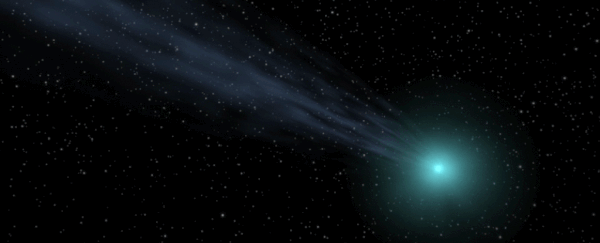How much pressure does light exert on the matter with which it interacts? It's a problem that's confounded scientists for nearly 150 years - and it may now have a solution. A team of researchers have come up with a method for measuring the effect a photon has on matter.
Even though a photon has no mass, it does have momentum, which can be defined within the framework of special relativity.
And this momentum exerts a force. It was all the way back in 1619 that the pressure exerted by light was hypothesised. In his treatise De Cometi, German mathematician and astronomer Johannes Kepler put forth that light from the Sun exerting pressure was the reason a comet's tail always trails away from the Sun.
It wasn't until 1873 that Scottish physicist James Clerk Maxwell hypothesised in A Treatise on Electricity and Magnetism that this was linked to momentum.
Clerk Maxwell - whose work provided a critical foundation for Einstein's work on relativity - surmised that light is a form of electromagnetic radiation that carries momentum and thus exerts pressure.
But the momentum - and therefore the radiation pressure - of a photon is vanishingly small, which means measuring it directly is extremely tricky.
"Until now, we hadn't determined how this momentum is converted into force or movement," explained engineer Kenneth Chau of the University of British Columbia Okanagan Campus in Canada.
"Because the amount of momentum carried by light is very small, we haven't had equipment sensitive enough to solve this."
Spoiler: our current technological capabilities still aren't sensitive enough to detect the momentum of a photon directly. But Chau and colleagues from Slovenia and Brazil have figured out a way to gauge the effects of a photon's momentum.
The built an apparatus around a mirror. Heat shielding went around it to protect the experiment from outside interferences, while sensitive acoustic sensors were equipped.
When they fired laser pulses at the mirror, this sent elastic waves moving across its surface. These, detected by the acoustic sensors, open the door to being able to calculate the radiation pressure being exerted by the momentum of the photons.
"We can't directly measure photon momentum, so our approach was to detect its effect on a mirror by 'listening' to the elastic waves that travelled through it," Chau said.
"We were able to trace the features of those waves back to the momentum residing in the light pulse itself, which opens the door to finally defining and modelling how light momentum exists inside materials."
This isn't just really neat science - it could have important practical applications.
For example, being able to accurately calculate radiation pressure could pave the way to better solar sail technology - a method of propellant-free propulsion for spacecraft that uses radiation pressure on a sail in lieu of wind.
It could also allow for better optical tweezers, a method of trapping and manipulating incredibly small particles - down to the scale of a single atom.
"We're not there yet," Chau said, "but the discovery in this work is an important step and I'm excited to see where it takes us next."
The research has been published in Nature Communications.
